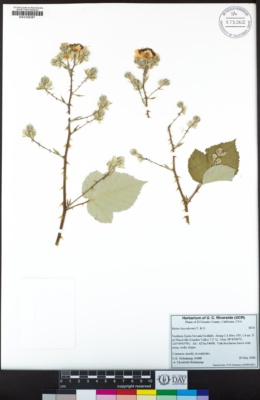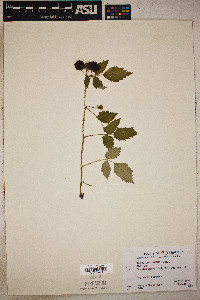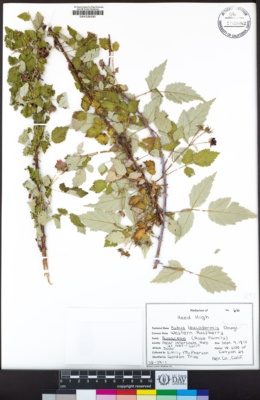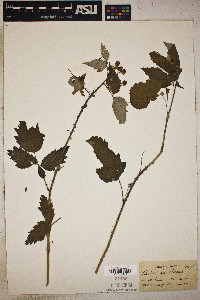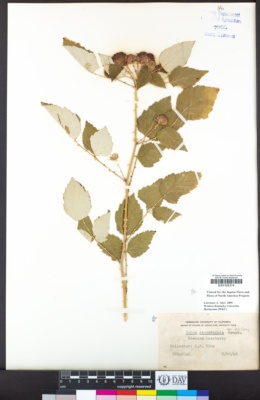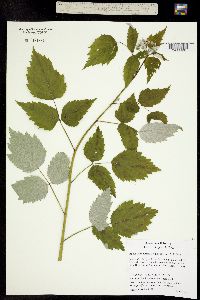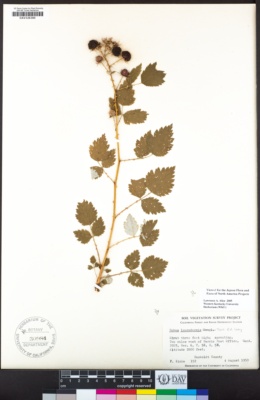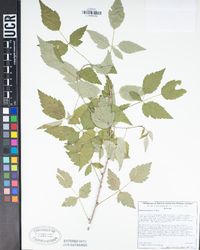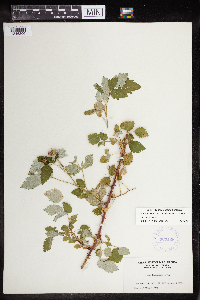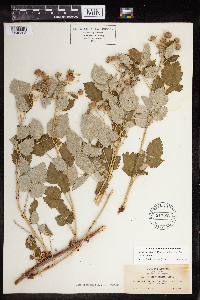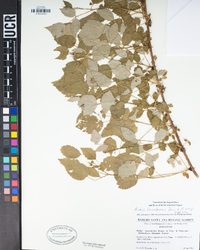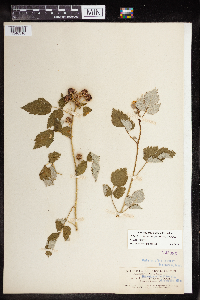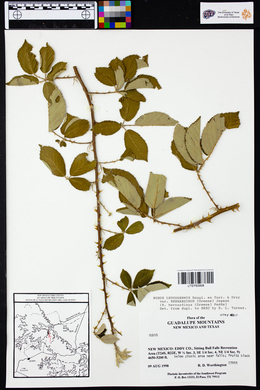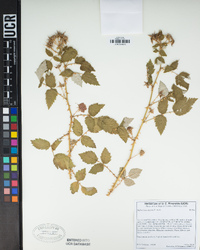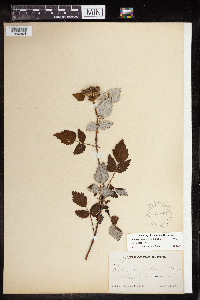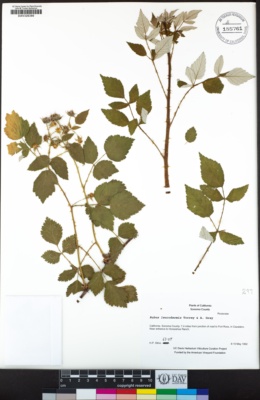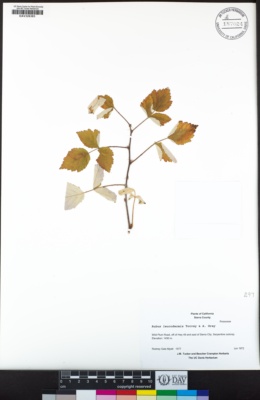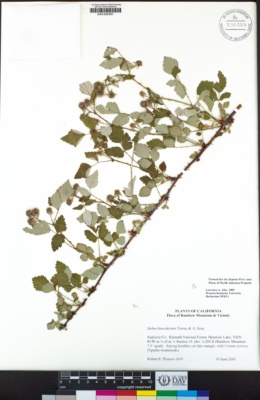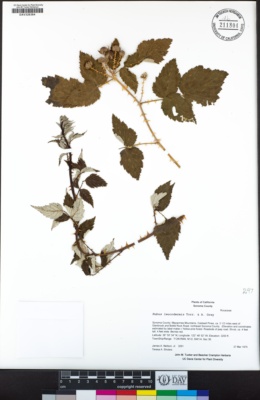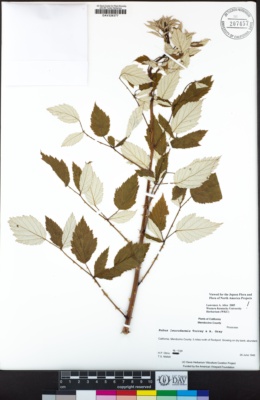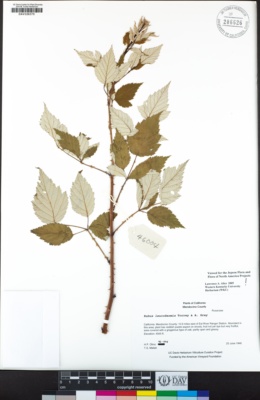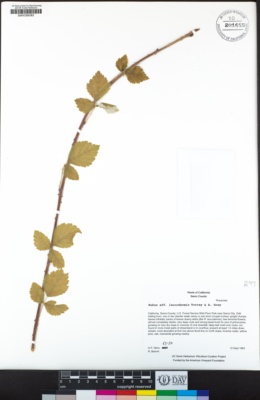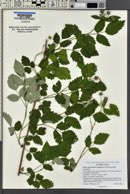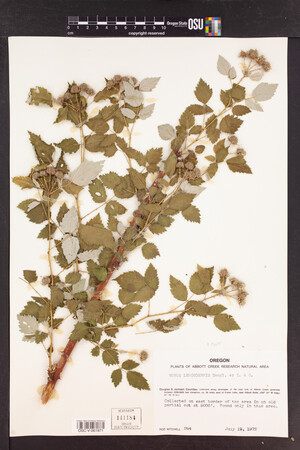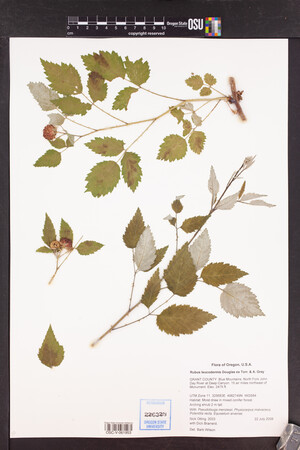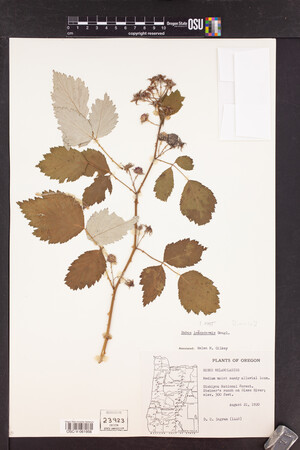Rubus leucodermis
|
|
|
|
Family: Rosaceae
White-Stem Raspberry, more...whitebark raspberry, western rasberry, western raspberry
[Batidaea sandbergii Greene, moreMelanobatus leucodermis (Douglas ex Torr. & A. Gray) Greene, Rubus trinitatis (A. Berger) L.H. Bailey] |
Plant: woody shrub; to 3 m tall; canes much-branched, erect, arching, or sprawling, and rooting at primocane tips; young epidermis with a prominent delicate white bloom; old epidermis not flaking off; plants mostly eglandular and minutely pilose to villous; prickles stout, broad-based, laterally flattened; cane prickles pointed or curved only slightly downward; those of the leaves and inflorescences smaller, strongly down-curved Leaves: deciduous, green above, white-tomentose below; leaflets usually ovate to lanceolate; margins singly to doubly serrate, occasionally lobed; primocane leaves 12-22 cm long, 10-18 cm wide, 3-foliolate to falsely appearing palmately 5-foliolate, the 2 lateral leaflets deeply divided with the 2 basal lobes imitating sessile, reflexed leaflets; floricane leaves 6-8(-13) cm long, 3-4(-8) cm wide, 3-foliolate INFLORESCENCE: simple obscurely bracteate cymes with 1-3 flowers, terminating short side-branches of the floricane, not surpassing the leaves Flowers: sepals erect to reflexed, 5-12 mm long, lanceolate to linear, attenuate, tomentose; petals white, 3-6 mm long; ovaries conspicuously gray-tomentose until maturity; styles glabrous Fruit: palatable, spherical to hemispherical, coherent, separating from the torus; drupelets finely canescent, usually dark purple to almost black, sometimes reddish or yellow-red, fleshy Misc: Usually riparian or wet areas in pine or mixed conifer forests; 1800-2450 m (5900-800 ft); May-Jun REFERENCES: Brasher, Jeffrey W. 2001. Rosaceae. J. Ariz. - Nev. Acad. Sci. Volume 33(1). Common Name: whitebark raspberry Duration: Perennial General: Deciduous shrub, 1-2.5 m (3.3-8.25 ft) tall; thicket forming; armed with stout, down-curved prickles and non- glandular hairs; stems numerous, erect or arched, yellowish but becoming reddish brown, with a conspicuous white bloom; epidermis not exfoliating on older stems; often rooting and forming plantlets at branch ends. Leaves: Alternate, palmately compound, green and glabrous or nearly so above, white-tomentose below; first year (vegetative) stem leaves trifoliate or appearing 5- foliate due to division of the basal pair of leaflets, 12-22 cm long, 10-18 cm wide; second year (reproductive) stem leaves trifoliate, 6-8 cm long, 3-6 cm wide; leaflets lanceolate to ovate, margins irregularly serrate to doubly serrate, occasionally lobed; stipules linear; petioles loosely tomentose, non-glandular, with down- curved prickles. Flowers: Inflorescence a simple cyme, 3-7 flowered, terminating short axillary branches; sepals 5, 5-12 mm long, non- glandular and tomentose, acuminate to caudate at tip; petals 5, oblanceolate to spatulate, 3-6 mm long, white. Fruits: Aggregate of fused drupelets, spherical, 1-1.2 cm wide, purple to black at maturity, finely canescent. Ecology: Found in riparian and moist areas in ponderosa pine or mixed conifer forests from 6,000-8,000 ft (1829-2438 m), flowers May-June. Distribution: Coconino, Gila, and Mohave counties; western Canada, western and southwestern U.S. Ethnobotany: Berries are eaten fresh or dried. Editor: Springer et al. 2011 |








